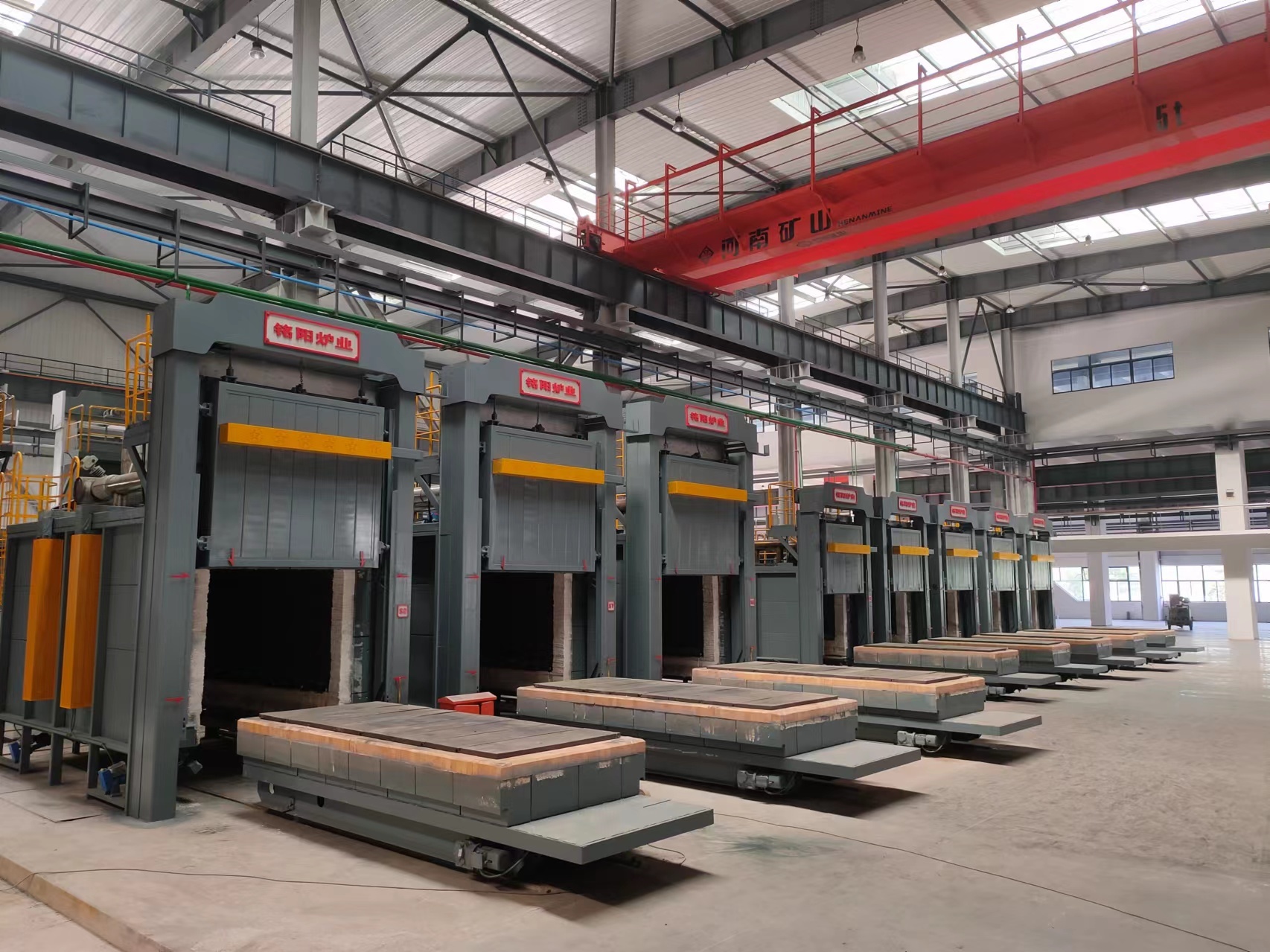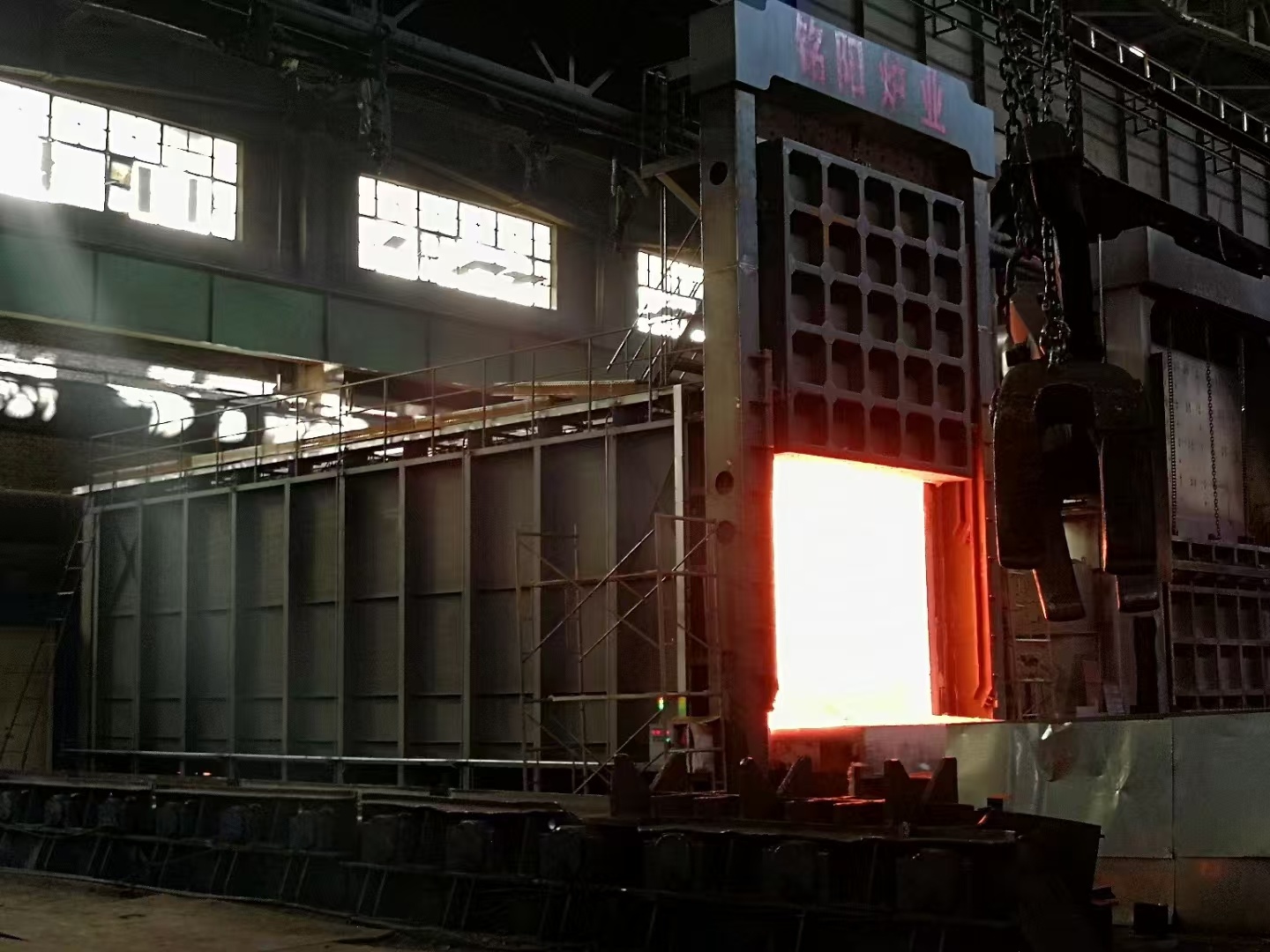


Why Advanced Bell Furnaces Are Essential for Optimal Heat Treatment Processes
Why Advanced Bell Furnaces Are Essential for Optimal Heat Treatment Processes
Table of Contents
Introduction to Heat Treatment Processes
The Role of Heat Treatment in Industrial Applications
Understanding Advanced Bell Furnaces
Benefits of Using Advanced Bell Furnaces
Key Technological Features of Advanced Bell Furnaces
Energy Efficiency and Sustainability in Heat Treatmen
Why Advanced Bell Furnaces Are Essential for Optimal Heat Treatment Processes
Table of Contents
- Introduction to Heat Treatment Processes
- The Role of Heat Treatment in Industrial Applications
- Understanding Advanced Bell Furnaces
- Benefits of Using Advanced Bell Furnaces
- Key Technological Features of Advanced Bell Furnaces
- Energy Efficiency and Sustainability in Heat Treatment
- Applications of Advanced Bell Furnaces
- Maintenance and Optimization of Bell Furnaces
- Frequently Asked Questions
- Conclusion
Introduction to Heat Treatment Processes
Heat treatment is a crucial process in the manufacturing and industrial sectors, particularly in metallurgy. It involves heating, holding, and cooling materials to alter their physical and sometimes chemical properties. The primary aim is to enhance the mechanical properties of metals and alloys, making them suitable for specific applications. Advanced technologies, such as **advanced bell furnaces**, play an integral role in optimizing these processes.
The Role of Heat Treatment in Industrial Applications
Heat treatment processes serve several pivotal functions in industrial applications, including:
- **Increasing Hardness and Strength**: Heat treatment can significantly improve the hardness and tensile strength of metals, rendering them more durable and capable of withstanding high-stress environments.
- **Enhancing Ductility**: Properly heat-treated materials exhibit increased ductility, allowing them to deform without breaking.
- **Refining Microstructures**: Heat treatment affects the microstructural composition of materials, leading to improved performance characteristics.
- **Improving Wear Resistance**: Components subjected to optimal heat treatment processes tend to resist wear and tear, extending their operational lifespan.
Understanding the importance of heat treatment processes helps industries select the right equipment, such as advanced bell furnaces, to achieve desired outcomes.
Understanding Advanced Bell Furnaces
Advanced bell furnaces are specialized heating systems designed for the heat treatment of various materials, particularly metals. Their design and functionality provide several advantages over traditional heat treatment methods. Key characteristics include:
- **Vertical Structure**: The bell-shaped structure optimizes heat distribution, ensuring even heating of materials.
- **Controlled Atmosphere**: Advanced bell furnaces often feature controlled atmospheres, allowing for precise manipulation of gas composition to prevent oxidation and improve the quality of the heat treatment.
- **Batch Processing**: These furnaces are typically used for batch processing, making them suitable for various parts, from small components to larger assemblies.
The operation of an advanced bell furnace consists of several stages, including loading, heating, soaking, and cooling, each of which is meticulously controlled to achieve optimal results.
Benefits of Using Advanced Bell Furnaces
The transition to advanced bell furnaces offers numerous benefits that enhance heat treatment processes:
1. Consistency and Uniformity
Advanced bell furnaces deliver consistent and uniform heating, ensuring every part reaches the desired temperature simultaneously. This uniformity minimizes the risk of defects in the final product.
2. Enhanced Energy Efficiency
Advanced bell furnaces are engineered for energy efficiency. With improved insulation and optimized heating cycles, they consume less energy compared to traditional furnaces, contributing to lower operational costs.
3. Reduced Cycle Times
These furnaces can significantly reduce cycle times due to faster heating and cooling rates. This efficiency allows for higher throughput in production processes, meeting the demands of modern manufacturing.
4. Improved Product Quality
With precise temperature control and a controlled atmosphere, advanced bell furnaces help maintain the integrity of materials. This results in enhanced mechanical properties and overall product quality.
5. Versatility in Applications
Advanced bell furnaces can accommodate a wide range of materials and configurations. They are suitable for various heat treatment processes, including hardening, tempering, and annealing.
Key Technological Features of Advanced Bell Furnaces
The efficacy of advanced bell furnaces can be attributed to several key technological features:
1. Advanced Control Systems
Modern bell furnaces are equipped with sophisticated control systems that allow for precise monitoring and adjustment of temperature and gas composition throughout the heating process.
2. Programmable Logic Controllers (PLCs)
PLCs enable automation of the heating process, allowing for efficient operation and minimizing human error.
3. Atmosphere Control
A controlled atmosphere can prevent unwanted reactions during heating, such as oxidation, which can degrade material properties.
4. High-Temperature Capabilities
Advanced bell furnaces can operate at high temperatures, suitable for treating a variety of materials, including high-performance alloys.
Energy Efficiency and Sustainability in Heat Treatment
As industries strive for sustainability, advanced bell furnaces contribute significantly to energy-efficient operations. By utilizing advanced insulation technologies and heat recovery systems, these furnaces minimize energy waste and reduce greenhouse gas emissions. This commitment to sustainability not only benefits the environment but also enhances the reputation of manufacturers in an increasingly eco-conscious marketplace.
Applications of Advanced Bell Furnaces
Advanced bell furnaces find applications across various industries, including:
1. Automotive Industry
In the automotive sector, heat treatment processes are critical for enhancing the durability and performance of components such as gears, crankshafts, and axles. Advanced bell furnaces ensure these parts undergo the necessary treatments for optimal performance.
2. Aerospace Industry
Aerospace components require precise heat treatment to meet stringent safety and performance standards. Advanced bell furnaces are ideal for processing high-strength materials used in aircraft manufacturing.
3. Tool and Die Manufacturing
The tooling and die industry relies on heat treatment to improve the hardness and wear resistance of tools. Advanced bell furnaces provide the necessary conditions for effective treatment.
4. Energy Sector
In the energy sector, heat-treated components are vital for the performance of turbines and generators. Advanced bell furnaces play a crucial role in preparing these components for demanding conditions.
Maintenance and Optimization of Bell Furnaces
To ensure the longevity and efficiency of advanced bell furnaces, regular maintenance is essential. Key maintenance practices include:
1. Routine Inspections
Conduct regular inspections of furnace components, including heating elements, insulation, and control systems, to identify potential issues before they escalate.
2. Calibration of Control Systems
Periodically calibrate the control systems to ensure accurate temperature readings and effective atmosphere management.
3. Cleaning and Upkeep
Maintain cleanliness around the furnace to prevent accumulation of debris that could affect performance.
Optimizing the operation of advanced bell furnaces through continuous monitoring and process adjustments further enhances their efficiency and effectiveness.
Frequently Asked Questions
1. What materials can be treated in advanced bell furnaces?
Advanced bell furnaces can treat a wide range of materials, including various alloys, carbon steels, and specialty metals used in automotive, aerospace, and industrial applications.
2. How does the atmosphere control feature work?
Atmosphere control systems manage the gas environment within the furnace, allowing for the addition of gases like nitrogen or argon to prevent oxidation and improve the quality of the heat treatment.
3. What are the typical operating temperatures for advanced bell furnaces?
Advanced bell furnaces can operate at temperatures ranging from 200°C to over 1200°C, making them suitable for various heat treatment processes.
4. How can energy efficiency be measured in bell furnaces?
Energy efficiency can be assessed by comparing energy consumption during heating cycles, analyzing heat loss, and monitoring overall operational costs.
5. Are advanced bell furnaces cost-effective?
While the initial investment may be higher than traditional furnaces, the long-term savings from reduced energy consumption, increased throughput, and improved product quality make them a cost-effective solution.
Conclusion
In conclusion, advanced bell furnaces are essential for optimal heat treatment processes in various industries. Their ability to provide consistent heating, energy efficiency, and improved product quality makes them a superior choice for manufacturers. As industries continue to seek advanced solutions to enhance their production capabilities, the role of advanced bell furnaces will undoubtedly grow, setting new standards for heat treatment processes. Embracing this technology not only elevates operational efficiency but also contributes to a more sustainable future in manufacturing.


